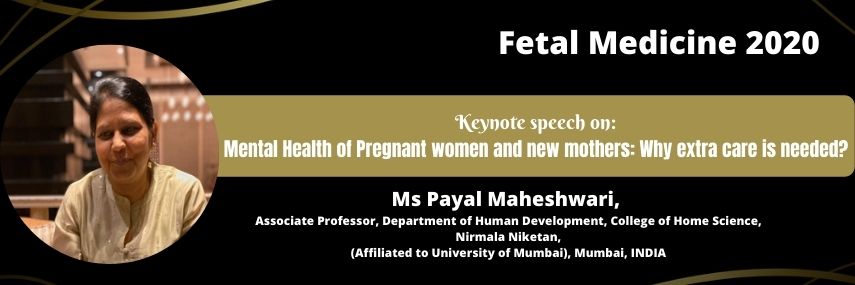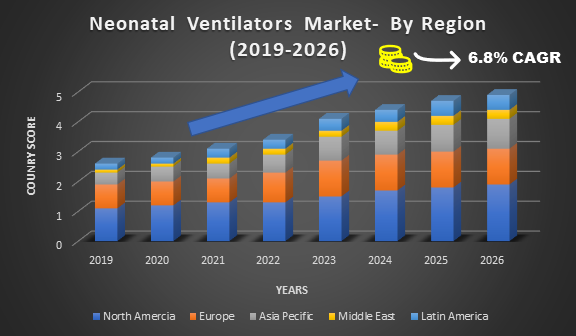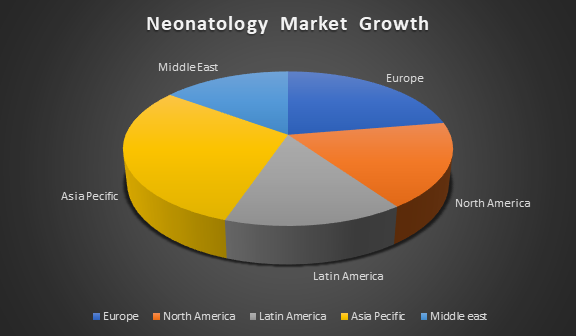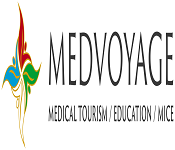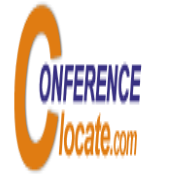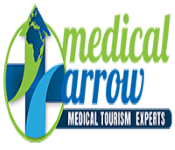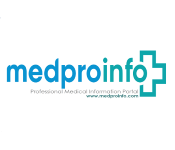Theme: For Safe and Healthy Pregnancies
Fetal Medicine 2020
We, at ME Conferences, would like to invite you to attend the “2nd International Conference on Maternal, Fetal and Neonatal Medicine” webinar scheduled on October 19-20, 2020. The theme of the conference is “For Safe and Healthy Pregnancies”. We welcome all the Ob/Gyn surgeons, Gynaecology consultants, MFM Specialists, perinatologists, neonatologists, researchers, students and delegates to take part in the meeting to share views and knowledge through keynote, poster and video discussions in the field of Fetal and Maternal Medicine. This conference provides an excellent opportunity to discuss the latest developments and challenges within the field.
Fetal Medicine 2020 provides a great platform to explore concepts with topics that include Neonatology and Perinatology, Fetal and Maternal Physiology, Maternal & Child Care, Maternal-Fetal Imaging, Maternal-Fetal Medicine & Nursing, Midwifery & Nursing, Multiple Pregnancies, Neonatal Oncology, Fetal Neurology, Neonatal Cardiology & Pulmonology, Neonatal Endocrinology, Neonatal Gastroenterology, Surgery and Radiology, Pregnancy and Childbirth, Neonatal Cholestasis, Rare Diseases, Neonatal Intensive Care Unit(NICU), Medical Complications of Pregnancy, Neonatal Immunity, Neonatal and Fetal Nutrition
We cordially invite you to Webinar.
Why to attend the conference?
- Meet your objectives from around the world addressed regarding Maternal, Fetal and Neonatal Medicine.
- This is every so often a single finest chance to accomplish the utmost significant gathering of members from the Research Institutions, Universities, Clinics and Hospitals.
- Distribute Data and Conduct demonstrations, meet with present potential speakers, generate a splash with additional products, and receive name recognition at this 2-day event.
- World renowned speakers, interesting techniques, latest updates in Maternal, Neonatal and stimulating the field of genuine extent hallmarks of this conference
Target Audiences:
- Ob/Gyn surgeons
- Gynaecology consultants
- MFM Specialists
- perinatologists
- Neonatologists
- Pediatricians
- Pediatric surgeons
- Pediatric Hepatologists
- Child Development Specialists
- Specialists in adolescent medicine
- Academic Professionals
- Research Scholars
- Primary care doctors
- Primary care professionals
- Pediatric Nutritionists and Dietitians
- Pharmacists
- Pediatric Nurses
- Pediatric Gastroenterologists
- Nurses specializing in pediatrics
- Pediatric Physicians
- Manufacturing Medical Devices
- Companies
- Students
Track 1: Neonatology and Perinatology
Neonatology is a one of the sub-department of pediatrics that consists of the special medical care of newborn infants, especially the ill newborn. An incubator is a machinery used to maintain environmental conditions suitable for a neonate. It is main hospital-based specialty and is usually experienced in neonatal intensive care units (NICUs).
Perinatology refers to the specialized care of pregnant women and their newborn babies. Perinatologist provides special care for high-risk pregnancies and is experts in a wide variety of complex maternal-fetal conditions. According to new research results if gestational age is adjusted for as a time-varying covariate, allowing the difference between weeks of gestational age to a very long time. The predicted death or discharge from the neonatal and perinatal unit was estimated and presented graphically by a week of gestational age.
- Antenatal Neonatology
- Neonatal intensive Care
- Preterm infant Cry
- Neonatal-Perinatal Medicine
Track 2: Fetal and Neonatal Pathology
Fetal and perinatal pathology is taken to include embryonic, fetal, perinatal and neonatal pathology. It is an examination or clinical investigations of mid-trimester abortuses and for placenta. It’s recommended that placentas be examined from all stillbirths, multiple pregnancies, low birth weight and small-for-gestational-age babies and abnormal pregnancies. Immune hydrops is generally diagnosed antenatally and the autopsy commonly provides confirmation and documentation of the extent of the cardiovascular compromise. In cases of unexplained non-immune hydrops, significant structural abnormalities have usually been excluded by tertiary referral ultrasound examination and in this setting the role of the autopsy is primarily to identify undetected abnormalities, such as congenital cardiac disease, and, more commonly, to facilitate ancillary investigations for the detection of underlying pathologies which are non-detectable sonographically, such as inherited metabolic disorders and a wide range of genetic syndromes.
Pathologists Obstetrics and Gynaecology doctors should be together and supports to treat for Fetal and Neonatal Pathology.
- Infant Birth
- Fetal Growth
- Trimester Growth
- Ventriculomegaly
Track 3: Human Fetal Growth and Development
Human fetal development during the fetal period (weeks 9 to 37) following fertilization. The long fetal period (embryonic period) is a time of extensive growth in mass and size as well as ongoing differentiation of organ systems established in the time of embryonic period. Clinically this time of period is generally defined as the Second Trimester and Third Trimester. Generally, many of the critical measurements of growth are now carried out by ultrasound and this period ends at birth. The embryonic period grows and differentiates further during the fetal period and does so at different times.
A better understanding of the gene profiling pathways that lead to developmental anomalies will aid new medical Research approaches for disease treatment and prevention.
- Fetal Growth Study
- Risk of stillgrowth
- Imprinted genes in Fetal growth
- Fetal adrenocortical development
Track 4: Electronic Fetal-Maternal Monitoring & Amniocentesis
Now the recent trend is a non-invasive technique in fetal diagnosis and therapy, to promote the progress of perinatal medicine without damaging the fetus. Generally, Amniocentesis are used to collect the amniotic fluid for the diagnosis of physical and chemical properties of the fluid will be replaced by ultrasonic tissue characterization, and non-invasive diagnosis is also useful for the repeated tests. Furthermore, genetic fetal diagnosis is performed by the test of maternal peripheral blood in NIPT, instead of the amniocentesis. And Non-invasive fetal therapy was a dream in the past, and it is real at present by the HIFU technology.
Recent Medicine research shows that new technology used to assess fetal heart activity called fetal electrocardiogram ST segment analysis or STAN.
- Hepatitis C in pregnancy
- Fetal mortality Surgery
- Prenatal and Perinatal factors
Track 5: Maternal Health and Fetal Interactions
Far from being a passive organ, the placenta plays a critical role in orchestrating the sequence and intensity of a series of complex maternal–fetal interactions. In essence, the placenta is of dual origin, comprised of both fetally- and maternally derived cells. The decidua, often referred to as the maternal compartment, forms the most superficial layer surrounding the placenta and is densely packed with maternal immune cells. Below this, a layer of fetally derived trophoblast cells secretes hormones and endocrine factors that support both fetal and maternal health. Lastly, maternal blood, descending from decidual spiral arteries, and fetal blood, rising through the umbilical arteries, converges in the villous spaces of what is known as the labyrinth layer, in mice, or the chorionic villi, in humans.
During placentation, a territorial boundary is defined between 2 individuals, the mother and her fetus, and this boundary needs to be in the right place.
- Gestational Diabetes Mellitus
- Placenta Health
- Maternal-Fetal interaction
Track 6: Pregnancy Complications & High-Risk Pregnancy Factors
A high-risk pregnancy is one that threatens the life of the mother and her fetus. Some pregnancies become more high risk as they progress, while women’s are at increased risk for complications even before they get pregnant for some variety of reasons. Early and regular prenatal care can help many women have healthy pregnancies and deliveries without complications. Many Risk factors for a high-risk pregnancy can include: Existing health conditions, such as diabetes, high blood pressure, or being HIV-positive1, Obesity, and overweight. Obesity increases the risk of high blood pressure, preeclampsia, gestational diabetes, stillbirth, neural tube defects, and cesarean delivery.
Pregnancy is considered as high risk then there are many complications that could be an effect on the health of the mother or baby before, during or after delivery.
- Murine Pregnancy
- Thrombocytopenia in pregnancy
- Mother to child transmission Diseases
- Pregnancy after renal transplantation
- Management of high risk pregnancy
Track 7: Multiple Gestations (twins and more)
Multiple births such are much more common today than they were in the past. There are many multiple births today in part because more women are taking infertility treatment, which carries a risk of multiple pregnancies. However, according to current research Guidelines Number of Embryos are Transferred, and the number of treatment-related pregnancies with triplets or more has decreased dramatically. And also, most of the women’s are waiting until later in life to attempt pregnancy, and older women are more likely than younger women to get pregnant with multiples, especially with fertility treatment. Although major medical advances have improved the advanced techniques of multiple births and associated significant medical risks and complications of the mother and children.
Two or more babies that come from the same egg are called identical. That the fertilized egg will split into two or more embryos. It is relatively associated with age, or family Health history.
- Pregnancy Complication in Multiple Gestations
- Reproduction technology on multiple gestations
- Dichorionic twin pregnancy
Track 8: Caesarean Section- Safety and Quality
Caesarean section can be a lifesaving procedure in some circumstances. Other advantages of a planned caesarean section compared with a spontaneous vaginal birth include reduced risk of labour-related morbidities for the baby and reduced risk of vaginal injuries for the mother. It is also associated with a reduced long-term risk of pelvic floor disorders, such as stress incontinence and pelvic organ prolapse although pregnancy itself is a risk factor for these and caesarean section may not protect against them. The most common reason for a caesarean section is a previous caesarean section.
Caesarean sections are mainly associated with short and long term risk which can be prolonged to many years beyond the current delivery and affect the health of the woman, her child, and future pregnancies.
- Caesarean Section Surgical techniques
- Intrapartum Caesarean Section
- Effect of Caesarean Section on subsequent fertility
Track 9: Kangaroo Mother Care (KMC)
Kangaroo mother care, sometimes called skin-to-skin care; it is a technique of newborn care where babies kept skin-to-skin with a parent, typically their mother. It is most commonly used for low birth-weight preterm babies, who are more suffer from hypothermi a, then need to admitted in neonatal unit to keep the baby warm and support early breastfeeding. Kangaroo mother care reducing both infant mortality and the risk of hospital-acquired infection, and increasing rates of breastfeeding and weight gain. Skin-to-skin care is used to describe the technique of placing full-term new-borns very soon after birth on the bare chest of their mother or father. This also improves rates of breastfeeding and can also lead to improved stability of the heart and breathing rate of the baby.
There are many barriers to implementing kangaroo mother care, including the need for time, social support, medical care, and family acceptance. Barriers within health systems included financing, organization and medical service delivery.
- Effect of KMC in growth
- Benefits of KMC
- Hypothermia in baby
Track 10: Maternal Nutrition and Breast feeding
Women who are giving breastfeeding they should eat a well-balanced diet and drink enough liquids. Although shedding Women will get extra pounds gained during pregnancy may be one of your biggest concerns, strict weight-loss plans are not recommended, especially during the first few months of breastfeeding.
Breast milk contains neurotrophins (molecules that promote nerve cell growth, function and survival)
- Complications in Lactation
- Maternal diet quality
- Infant growth and body composition
Track 11: Midwifery Care and Nursing Services
The objective of nursing care is to improve the health, maintain and quality of life and subsistence of patients and to provide treatments to and reduce the troubles of stable patients. Nursing services are provided to patients who cannot cope independently because of various health problems and disabilities resulting from chronic illnesses. Many of nursing services are provided to patients in hospitals, care institutions or at home according to their needs. School health services are also provided to school pupils.
Preterm birth occurred spontaneously or can be many of induced for medical reasons. Male fetuses were at increased risk of preterm birth as well as preterm premature rupture of membranes.
- Physiological childbirth education
- Perinatal education
- Normal or natural birth
- Safe and Healthy birth
Track 12: Congenital Anomalies, Preterm Birth Defects & Complications
Congenital anomalies are important causes of childhood deaths and infant, chronic illness and disability. Through the resolution on birth defects of the Sitxty-third World Health Assembly (2011), Member States agreed to promote primary prevention and improve the health of children with congenital anomalies by: developing and strengthening registration and surveillance systems, strengthening research and studies on etiology, diagnosis and prevention on developing expertise and building capacity, promoting international cooperation.
The surgical neonate, the new-born submitted to surgery between birth and 28 days of life, requires care in specialized centers in the hospital and offering high-risk neonatal support, with neonatology and Pediatric Surgery specialties.
- Congenital Anomalies
- Risk Factors of Congenital Anomalies
- Antenatal
- Premature
Track 13: Neonatal Surgery & Complications
Neonatal surgery is recognized as an independent discipline in general surgery, and requiring the expertise of pediatric surgeons to optimizing outcomes in infants with surgical conditions. Survival neonatal surgery has improved dramatically in the past 65 years. Improvements in Survival pediatric surgical outcomes are in part attributable to improved understanding of neonatal physiology, specialized pediatric anesthesia, neonatal critical care including sophisticated cardiopulmonary support, utilization of adjustments in fluid management, parenteral nutrition, refinement of surgical technique, and advances in surgical technology including minimally invasive options.
Neonatal Intensive Care Unit is a specialized unit to treating premature or newly born babies having medical complications and Neonatal Surgeries.
- Epidural analgesia for major neonatal surgery
- Complications in head and neck surgery
- Complications in pediatric enteral and vascular access
- Early mortality after neonatal surgery
- Parents’ experiences of neonatal surgery
- Factors associated with neonatal ostomy complications
Track 14: Neonatal Nursing & Intensive Care Units
The birth of a baby is a wonderful and very complex process. In part of that physical and emotional changes occur for mother and baby. A baby must make many of physical adjustments to life outside the mother's body. Before birth, eating, breathing, elimination of waste, and immunologic protection all came from the mother. When a baby enters the world, many body systems should change dramatically from the way they functioned during fetal life: The lungs should breathe air, the cardiopulmonary circulation changes will occur; the digestive system also must begin to process food and excrete waste. The kidneys must begin work to balance fluids and chemicals in the body and excrete waste.
Neonatal nurses may function as the primary caregiver for premature infants during the first few months of life.
- Perinatal Nurses/Nurse Practitioners
- Neonatal Intensive Care Unit and treatments
- Clinical information management in the hospital
- Support for therapeutic decision making and improved safety
- Neonatal Intensive Care Nurse
- Neonatal Nurse Specialist Career
Track 15: Drugs, Vaccines, and Immunization for New Borns
Immunization means protection from bacteria and viruses. The most effective and safe way to protect children from contagious diseases is by vaccination only. Vaccines are considered a breakthrough in preventive medicines. Vaccines protect child’s health by preventing from contracting severe contagious diseases. All routine vaccines given at Tipat Halav family care centres and at schools is free of charge.
Diphtheria, tetanus, pertussis is a combo vaccine that protects against three very serious diseases.
- Vaccinations in Infants and Children
- Immunization Before Pregnancy
- Vaccination Guidelines and Infant childhood immunization
- Side Effects of Vaccines and drugs
- Vaccinations in series and Tests for Mother
- Medical Care and up to 1- to 3-Month-Old
Track 16: Neonatal Infectious Diseases & Antibiotics
Neonatal sepsis remains a feared cause of morbidity and mortality in the neonatal time of the period. Neonatal, Maternal, and environmental factors are associated with risk of infection, and a combination of prevention strategies and early initiation of therapy are required to prevent adverse outcomes. The following chapter reviews recent trends in epidemiology, and provides an update on risk factors, diagnostic methods and management of neonatal sepsis. Antibiotics can effective for neonatal infections, especially when the pathogen is quickly identified. Instead of relying solely on many of culturing techniques, pathogen identification has improved substantially with advancing technology; however, neonate mortality reduction has not kept pace and remains 25% to 50%. While preterm neonates are particularly high risk, all neonates can develop infection.
Neonatal infection can be acquired, in the birth canal during delivery, in utero transplacentally and from external sources after birth or postpartum.
- Epidemiology of neonatal sepsis
- Mother to child transmission Infectious Diseases
- Risk factors for neonatal infection
- Clinical evaluation of Infectious Diseases
- Antibiotics in Neonates
- Clinical indicators of possible infection
- Duration of antibiotic treatment
Track 17: Neonatal Pulmonary Disorder & Resuscitation
The adaptation from intrauterine to extra uterine life involves a rapid and complex orchestration of physiologic changes. Within a minute of life, the newly born infant is subjected to multiple unfamiliar stimuli such as light, cold and noise compared with the dark, warm environment of intrauterine life. In addition, the infant should make the transition from dependence on placental gas exchange to spontaneous air breathing and pulmonary gas exchange. Most of this transition occurs without difficulty. However, multiple maternal, placental, mechanical, and fetal conditions exist that can jeopardize a smooth transition and signal the need for the intervention. It is generally estimated that 6% to 13% of newly born infants will require some degree of active resuscitation for this transition to occur.
More reliance on diaphragmatic excursions over intercostal muscles is physiology significant of the respiratory system in neonates and infants.
- The physiology of the first breath
- New-born Respiratory Disorders
- Neonatal Chronic lung disease
- Current guidelines for neonatal resuscitation
- Neonatal resuscitation supplies and equipment
- The Physiology of Transition
Track 18: Neonatal and Pediatric Cardiology
Mainly neonatal care technology should enable caregivers to deliver life-sustaining, non-invasive, developmental care to neonates. The main goal is to provide a quiet and serene environment to protect developing eyes and ears while keeping body temperatures stable. Tele-echocardiography is the potential to bring real-time diagnoses to neonatal facilities without in-house pediatric cardiologists. Many neonates in rural places, smaller cities, and community hospitals do not have immediate access to pediatric sonographers or echocardiogram interpretation by pediatric cardiologists. This can be resulting in suboptimal echocardiogram quality, delay in initiation of medical intervention, unnecessary patient transport, and increased medical expenditures.
Fetal and neonatal heart conditions are congenital heart defects ranging from septal defects to hypoplastic left heart syndrome, Irregular heart rhythms, and prenatal heart failure.
- Neonatal Cardiac Surgery
- Cardiac emergencies in neonates and young infants
- Basics of Functional Echocardiography in Children
- Low Cardiac Output Syndrome
- Assessment and Diagnosis
- Pediatric cardiology and the newborn
Track 19: Preconception Health or Fertility
Preconceptional health or fertility has been shown to be an important determinant of fertility, fecundity and perinatal outcomes. In recent days the impact of periconceptional factors on developmental programming, and the health of the resultant baby have become increasingly clear. Since fertility specialists care for couples during this critical phase, they have an only unique opportunity to collaborate with the couple to optimise preconceptional health and thus fertility and pregnancy outcomes. Preconception care and counselling is given by Gynaecologist about nutritional habits, medical conditions, and about any factors that could be preventing of getting pregnancy. Taking more caffeine while fertility treatments have been associated with reduced fertility.
- Effective Preconception Care
- In vitro fertilisation (IVF)
- Preconception and supplement for Preconception
- Ayurvedic Guide to Fertility
- Spiritual Side of Fertility
- Laproscopy & Hysteroscopy
Track 20: Prevention of Major Obstetric Syndromes
Endometriosis and adenomyosis are characterized by the presence of ectopic endometrium, but also associated with the functional and structural changes in the eutopic endometrium and inner myometrium. Alterations in the inner myometrium occurring in women with adenomyosis and endometriosis may be at the root of a defective remodeling of the myometrial spiral arteries from the onset of decidualization and increased risk of defective deep placentation. The major association of obstetrical syndromes is different types of defective remodelling of the myometrial spiral arteries has been well documented.
The polycystic ovary syndrome is a complex endocrine and metabolic disorder that is associated with the presence of obesity, infertility, and obstetric complications.
- Cause of major obstetrical syndromes
- Identification, monitoring and prevention of the Obstetric Syndromes
- Prevention and management of postpartum haemorrhage
- Identification and monitoring of the Obstetric Syndromes
- Anaphylactoid syndrome of pregnancy (aka AFE)
Track 21: Obesity and its impact on Neonatal health
The increasing rate of maternal obesity is provides a major challenge to obstetric practice. Maternal obesity can also result in negative outcomes for both women and fetuses. The maternal risks during pregnancy include preeclampsia, and gestational diabetes. Mainly the fetus is at risk for stillbirth and congenital anomalies. Obesity in pregnancy cans effects on health later in life for both mother and child. For women, this type of risks includes heart disease and hypertension. At that time Children have a risk of future obesity and heart disease. Women and their offspring are at increased risk for diabetes and other endocrinal problems.
Recent research results normal weight, overweight, and obese women of childbearing age show a clear correlation between increasing maternal BMI and higher neonatal morbidity.
- Perinatal outcomes of maternal overweight
- Obesity in term infants
- Impact of Maternal Obesity on Fetal Health
- Mechanism of Action of Obesity on Fetal Growth
- Hormonal Imbalance
Track 22: Blood Clotting Disorders and Nephrology
Patients with renal failure on new anticoagulants drugs have experienced to excessive bleeding which can be related to a changed pharmacokinetic profile of the compounds. Then the coagulation system itself, even without any interference of coagulation modifying drugs, it is already profoundly changed during renal failure. Coagulation disorders with either episodes of severe bleeding or thrombosis represent a main important cause for the morbidity and mortality of such patients. The underlying reasons for these coagulation disorders involve the changing interaction of different components of the coagulation system such as the platelets and the vessel wall in the metabolic conditions and the coagulation cascade of renal failure.
The fact about renal failure in children’s, the child has swelling around the eyes in the morning, swelling on ankles, feet and belly. And some more symptoms more tired & more irritable, eating less, pale looking.
- Risk Factors in Chronic Kidney Disease in Neonatal
- Blood clotting disorders
- Facts about clotting disorders
- Diagnosis and treatment
- Nephrotic Syndrome and its types
- Neonatal hypertension: diagnosis and management
Track 23: Neonatal Dermatology and Allergy
The neonatal period comprises the first four weeks of life. That is a period of adaptation where the skin often presents many changes: resulting from a physiological response, transient lesions, others as a consequence of transient diseases and some as markers of severe disorders. However, generally the majority of neonatal skin pustules are not infectious, comprising the benign neonatal pustulosis. Benign neonatal pustuloses are a group of clinical disease that is characterized by pustular eruptions in which a contagious agent is not responsible for its etiology. The most famous one is erythema toxicum neonatorum, and the transient neonatal pustular melanosis and the benign cephalic pustulosis.
- The newborn skin stretcher can be separated from adult’s skin stretcher in several ways.
- Skin Physiology of the Neonate and Infant
- Newborn skin care and prevention
- Family history of eczema, asthma
- Babies and Skin Allergies
- Neonatal skin pustules
- Transient neonatal pustular melanosis
Track 24: Neonatology study and education
Maternal Health is the crucial topic which effect in fetal Growth, so a mother should aware and should have knowledge regarding fetal health and growth in the time period of Pregnancy. Maternal nutrition plays a important role in fetal growth and development. Although considerable effort has been directed towards defining nutrient requirements of animals over the past 30 y, suboptimal nutrition during gestation remains a significant problem for many animal species (e.g., cattle, pigs, and sheep) worldwide. Despite advanced prenatal care for mothers and fetuses, ∼5% of human infants born in the U.S. suffers from intrauterine growth retardation (IUGR). Over the past decade, compelling epidemiological studies have linked IUGR with the etiology of many chronic diseases in adult humans and animals. These intriguing findings have prompted extensive animal studies to identify the biochemical basis for nutritional programming of fetal development and its long-term health consequences.
- Fetal Nutrition in Pregnancy
- Effect of environmental Factors
- Prenatal Nutrition
- Fetal growth in Placenta
- Intrauterine route of Drug administration
- Maternal Malnutrition
Monitoring procedures are important for the evaluation of the clinical state of patients and to assess changes in their conditions, thus providing necessary treatments on time. Both these two objectives can be achieved by introducing technology, thus, allowing accurate classification and extraction of useful diagnostic information. It has been indicated that the computation of different indices on FHRV signals, either linear or nonlinear, gives helpful indications to describe pathophysiological mechanisms involved in the cardiovascular and neural system controlling the fetal heart. As a more contribution, also wearable systems for fetal ECG recording could provide new technological solutions improving the quality and usability of prenatal monitoring. These technological advancements provide a feasible environment for the growth of this market in the future. Additionally, increasing incidence of premature birth and growing government initiatives in developing countries regarding fetal care are further augmenting the market growth.
According to the resent analysis of Reports and Data, the global Neonatal and Fetal (Labor & Delivery) Care Market was valued at USD 6.39 billion in 2018 and is expected to reach USD 9.80 billion by the year 2026, at a CAGR of 5.5%. Maternity care and infant safety are top healthcare priorities in developed as well as developing nations. With technological and infrastructural advancements in healthcare across the globe, the market for fetal and infant healthcare is on rise. The efficacy of the neonatal products & services is a crucial factor for the safety during childbirth. According to report, globally every year more than one out of seven births (20 million babies worldwide) are born with low birthweight.
Significance and Scope:
Maternal, fetal-neonatal medicine procedures vary from market to market. Most companies view Maternal, fetal-neonatal procedures as preventive care and therefore do not cover them, and many have historically had refuse for congenital conditions as well. Still, in markets where these conditions are covered, costs generally do not exceed USD $35,000. That is lower than the costs incurred to treat congenital conditions even in just the first year of life. It may, therefore, be more cost-effective to treat conditions such as fetal lung and heart defects and spinal bifida in utero, as doing so can save costs compared to postnatal procedures.
Why in Helsinki, Finland?
The Asia Pacific region is expected to grow at a considerably higher rate during the forecast period owing to aspects, such as high birth rate in some Asia Pacific countries, such as India & China along with rising awareness programs for the improvement of fetal care & neonatal care.
Neonatal care service in Malaysia is almost entirely publicly funded and has expanded substantially over the last 20 years. Perinatal and neonatal outcomes have also improved considerably in the same period. Prior to 1995, the perinatal mortality rates (PMR) ranged from 12.6 to 25.4 per 1000 births depending on the hospital and region served. The PMR has since dropped to 9.7 per 1000 births in 1999.3 Similarly, the neonatal mortality rate has shown a gradual decline from 14.2 per 1000 livebirths (LB) in 1980,4 to 8.5 per 1000 LB in 1990 and 5.1 per 1000 LB in 1998.5 The outcome of very low birth weight (VLBW) babies has also been evaluated in a national study.6 A cohort of VLBW babies was enrolled in 1993 and followed up till 1996. The survival rate was 62.6% in 1993 and 69.3% in 1996. Neurodevelopmental outcome at 2 years of age was assessed for 77 survivors out of a cohort of 150 VLBW infants born in 1993.7 The mean general quotient on the Griffith's developmental scale of the 77 infants was 94 as compared 104 in a control group. Functionally 70.2% were normal, 23.3% had mild handicap, 1.3% moderate, 2.5% severe handicap and 2.5% multiple severe handicap.
Major Associations in the World:
- Middle East Pediatric Orthopedic Society
- Asian and Oceania Society for Paediatric Radiology
- Asian Pacific Pediatric Association
- Philippine Medical Association
- Asian Society for Pediatric Infectious Diseases
- The Pacific Association of Pediatric Surgeons
- International Primary Care Respiratory Group
- Asian Surgical Association
- Brain Tumor Foundation for Children
- Japanese Society of Pediatric Cardiology
- Association of Surgeons of the Netherlands
- International Society for Social Pediatrics
- Academic Pediatric Association
- Academy of Medical-Surgical Nurses
- Academy of Neonatal Nursing
- Aimee's Army Childhood Cancer Foundation
- Alex's Lemonade Stand
- Alliance for Childhood Cancer
- Alliance of Cardiovascular Professionals
- American Academy of Nursing
- American Academy of Pediatric Dentistry
- American Academy of Pediatrics
- American academy of Pediatrics Breastfeeding
- American Academy of Pediatrics Georgia
- American Association of Critical-Care Nurses
- American Association of Heart Failure Nurses
- American Association of Orthopedic Surgeons
- American Association of Pediatric Urologists
- American board of Pediatrics
- American Brain Tumor Association
- American Childhood Cancer Organization
- American college of Surgeons Committee on Trauma
- American Gastroenterological Association
- American Heart Association
- American Medical Group Association
- American Pediatric Society
- American Pediatric Surgical Association
- American Pediatric Surgical Associations
- American Pediatric Surgical Nurses Association
- American Society for Echocardiography Conferences
- American Society for Gastrointestinal Endoscopy
- American Society for Parenteral and Enteral Nutrition
- American Society for Echocardiography Conferences
- American Society of Nuclear Cardiology
- American Society of Pediatric Hematology and Oncology
- American Society of Pediatric Otolaryngology
- Childhood Cancer Foundation
- Children's Cancer Association
- Children's Cardiology Associates, Texas
- Children's Center for Digestive Health Care, LLC
- Children’s Leukemia Research Association
- Colorado Kids Cancer Association
- CURE Childhood Cancer Association
Industries Associated with Neonatology Worldwide:
- MEDNAX, Inc
- AstraZeneca
- Sanofi
- Boehringer Ingelheim
- Roche
- Bristol-Myers Squibb
- United Therapeutics
- Astellas
- Actelion
- Merck & Co
- Sanofi
- Takeda
- Otsuka
- Gilead Sciences
- Johnson & Johnson
Hospitals Associated with Neonatology Worldwide:
- Hospital Universitari Arnau de Vilanova
- Hospital de Jove
- Hospital Universitario Virgen del Rocío
- Hospital Virgen De La Victoria
- Hospital of Puerto Real
- Gentofte Hospital in Gentofte
- Hospital Paris
- CHU Brugmann – Brussels
- Queen Fabiola Children's University Hospital – Brussels
- Argos General Hospital
- St Jude Children’s Research Hospital
- St Louis Children’s Hospital
- Monroe Carell Jr. Children’s Hospital
- Children’s Hospital of Philadelphia
- Mattel Children’s Hospital
- Texas Children’s Hospital
- Boston Children's Hospital
- Nationwide Children's Hospital
- Duke Children’s Hospital and Health Center
- All Children’s Hospital of John Hopkins Medicine
Universities Associated with Neonatology Worldwide:
- University of Pennsylvania
- Vanderbilt University
- Mount Royal University
- University of Maryland School of Nursing
- University of Indianapolis
- University of Salford
- University of Virginia
- University of Pittsburgh
- University of Pennsylvania
- Columbia University
- Duke University
- University of Texas
- Brown University
- University of Chicago
Related Conferences: Fetal Conference| Neonatology Meet | Pediatric Conferences | Pediatric Nursing | Clinical Pediatric | Fetal Meetings | Maternal Medicine events | 2020
Related Conferences:
- 22nd World Congress on Pediatric & Neonatal Oncology, February 10-11, 2020 Auckland, Newzealand
- 19th Annual Congress on Pediatrics & Neonatology February 10-11, 2020 Auckland, Newzealand
- 6thAnnual Congress on Pediatric Dentistry & Orthodontics February 10-11, 2020 Auckland, Newzealand
- 17th International Conference on Pediatrics and Pediatric Cardiology, March 09-10, 2020 Prague, Czech Republic
- 5th International Conference on Pediatrics and Pediatric Surgery, March 11-12, 2020 Rome, Italy
- 4th World Congress on Pediatric Neurology and Pediatric Surgery, March 16-17, 2020 Sydney, Australia
- 29th World Neonatal, Pediatric and Family Medicine Conference, March 19-20, 2020 Dubai, UAE
- 29th World Congress on Neonatology and Perinatology, March 26-27, 2020 Kyoto, Japan
- 2nd International Conference on Pediatrics and Primary Healthcare Nursing, March 26-27, 2020 Abu Dhabi, UAE
- 22nd Annual Congress on Neonatology & Pediatrics, April 06-07, 2020 Osaka, Japan
- 30th Global Summit on Pediatrics and Neonatology, April 13-14, 2020 Bangkok, Thailand
- 23rd Global Summit on Pediatrics, Neonatology & Primary Care, April 27-28, 2020 Dubai, UAE
- World congress on Neonatology and Pediatric medicine, May 10-11, 2020 Yokohama, Japan
Related Associations (Asia Pacific & Middle East):
Middle East Pediatric Orthopedic Society, Asian and Oceania Society for Paediatric Radiology, Asian Pacific Pediatric Association, Philippine Medical Association, Asian Society for Pediatric Infectious Diseases, The Pacific Association of Pediatric Surgeons, International Primary Care Respiratory Group, Asian Surgical Association, Brain Tumor Foundation for Children, Japanese Society of Pediatric Cardiology, Asian Society for Pediatric Research, Pediatric Cardiac Society of India, Jordan Pediatric Society, Middle East Pediatric Orthopedic Society, The Malaysian Pediatric Association, Israel Gastroenterology Association, Union of Middle Eastern and Mediterranean Pediatric Societies, Asian Association of Pediatric Surgeons, International Primary Care Respiratory Group
Europe:
Association of Surgeons of the Netherlands, Italian Society of Pediatrics, International Society for Social Pediatrics, Society of Residents in Surgery of the Netherlands, European Paediatric surgeons Association, Baltic Association of Paediatric Surgeons Tallinn, European Paediatric Association, Pediatric Surgery (EBPS), Italian Society of Pediatric Rome, Italy, Europe, European Society For Developmental Perinatal Paediatric Pharmacology, Russian Society of Cardiology, Czech Neonatal society, European society of Pediatric Neonatal Intensive Care, European Academy of Paediatrics, British Association of Paediatric Surgeons (BAPS), The Pacific Association of Pediatric Surgeons (PAPS), Open Pediatrics Community, European Society for Paediatric Research (ESPR), Association of Surgeons of the Netherlands, Italian Society of Pediatrics, International Society for Social Pediatrics
USA:
American Society for Mohs Surgery, Alliance Societies – POSNA Rosemont, USA, Alliance Societies – POSNA Rosemont, USA, North America, Society for Pediatric Pathology (SPP) New York, Canada Academy of Pediatric Dentistry Ottawa, American Pediatric Society Texas City, USA, North America, Alliance Societies – POSNA Rosemont, Children’s Leukemic Research Association, Asian Society for Pediatric Research (ASPR) Virginia, American Academy of Paediatrics Washington, USA, American Society for Laser Medicine and Surgery, USA Society for Pediatric Pathology (SPP), American Osteopathic College of Dermatology, USA, American Academy of Paediatric Dentistry Chicago, American Academy of Dermatology, American Board of Dermatology, American Society for Laser Medicine and Surgery, Paediatric Societies Congress
Fetal Medicine 2019
We would like to thank all of our wonderful keynotes, speakers, conference attendees, students, associations, media partners, and guests for making Fetal Medicine 2019 a successful event.
With the overwhelming success of the previous conferences, Conference series hosted the “International Conference on MATERNAL, FETAL AND NEONATAL MEDICINE” during May 30-31, 2019 at Renaissance Polat Istanbul Hotel, Istanbul, Turkey with the theme “Ensuring Optimal Maternal and New-born care through In-depth review & Analysis of Risk factors” was a great success, where eminent keynote speakers from various reputed institutions and organizations with their resplendent presence addressed the gathering.
Benevolent response and active participation was received from the renowned experts and Editorial Board Members of Conference series Journals as well as from the Dieticians, Nutritionists, researchers, students and leaders in Obesity, who made this event successful.
The Conference was carried out through various informative and cutting edge sessions, in which the discussions were held on the following thought provoking and cerebrating scientific tracks:
- Neonatology and Perinatology
- Fetal and Neonatal Pathology
- Human Fetal Growth and Development
- Electronic Fetal-Maternal Monitoring & Amniocentesis
- Maternal Health and Fetal Interactions
- Pregnancy Complications & High-Risk Pregnancy Factors
- Multiple Gestations (twins and more)
- Kangaroo Mother Care
- Caesarean Section- Safety and Quality
- Midwifery Care and Nursing Services
- Maternal Nutrition and Breastfeeding
- Congenital Anomalies, Preterm Birth Defects & Complications
- Neonatal Surgery & Complications
- Neonatal Nursing & Intensive Care Units
- Drugs, Vaccines, and Immunization for New Borns
- Neonatal Infectious Diseases & Antibiotics
- Neonatal Pulmonary Disorder & Resuscitation
- Neonatal and Pediatric Cardiology
- Preconception Health or Fertility
- Prevention of Major Obstetric Syndromes
- Obesity and its impact on Neonatal health
- Blood Clotting Disorders and Nephrology
- Common Metabolic Problems in New born
- Neonatal Dermatology and Allergy
The conference was embarked with an opening ceremony followed by lectures delivered by members of the Keynote forum. The adepts who promulgated the theme with their exquisite talk were:
- Brankica Vasiljevic, NMC Royal Hospital, UAE
- Aziz Koleilat, Makassed University General Hospital, Lebanon
All the above mentioned Keynote speakers gave their energetic and fruitful contributions and special thanks to our Honourable Moderators for their remarkable contribution towards smooth functioning at Fetal Medicine 2019
Conference Sessions Chairs:
- Meidelin Hoei, Ospital ng Maynila Medical Center, Philippines
ME Conferences offers its heartfelt appreciation to Societies and Organizations and is also obliged to the Organizing Committee Members, adepts of field, various outside experts, company representatives and other eminent personalities who interlaced with Conference series in supporting and making the conference never before one.
Your rejoinder is our inspiration; keeping this motto in mind and being witnessed the triumph of Fetal Medicine 2019, ME Conferences is delighted to announce the next event. Mark your calendars for the upcoming extravaganza,” 2nd International Conference on Maternal, Fetal and Neonatal Medicine “ Webinar to be held during October 19-20, 2020.
For details Visit: https://fetalmedicine.pediatricsconferences.com/
Conference Highlights
- Neonatology and Perinatology
- Fetal and Neonatal Pathology
- Human Fetal Growth and Development
- Electronic Fetal-Maternal Monitoring & Amniocentesis
- Maternal Health and Fetal Interactions
- Pregnancy Complications & High-Risk Pregnancy Factors
- Multiple Gestations (twins and more)
- Caesarean Section- Safety and Quality
- Kangaroo Mother Care (KMC)
- Maternal Nutrition and Breast feeding
- Midwifery Care and Nursing Services
- Congenital Anomalies, Preterm Birth Defects & Complications
- Neonatal Surgery & Complications
- Neonatal Nursing & Intensive Care Units
- Drugs, Vaccines, and Immunization for New Borns
- Neonatal Infectious Diseases & Antibiotics
- Neonatal Pulmonary Disorder & Resuscitation
- Neonatal and Pediatric Cardiology
- Preconception Health or Fertility
- Prevention of Major Obstetric Syndromes
- Obesity and its impact on Neonatal health
- Blood Clotting Disorders and Nephrology
- Neonatal Dermatology and Allergy
- Neonatology study and education
To share your views and research, please click here to register for the Conference.
To Collaborate Scientific Professionals around the World
| Conference Date | October 16-17, 2020 | ||
| Sponsors & Exhibitors |
|
||
| Speaker Opportunity Closed | |||
| Poster Opportunity Closed | Click Here to View | ||
Useful Links
Special Issues
All accepted abstracts will be published in respective Our International Journals.
- Journal of Neonatal Surgery
- Journal of Pregnancy and Child Health
- Journal of Child and Adolescent Behavior
Abstracts will be provided with Digital Object Identifier by

